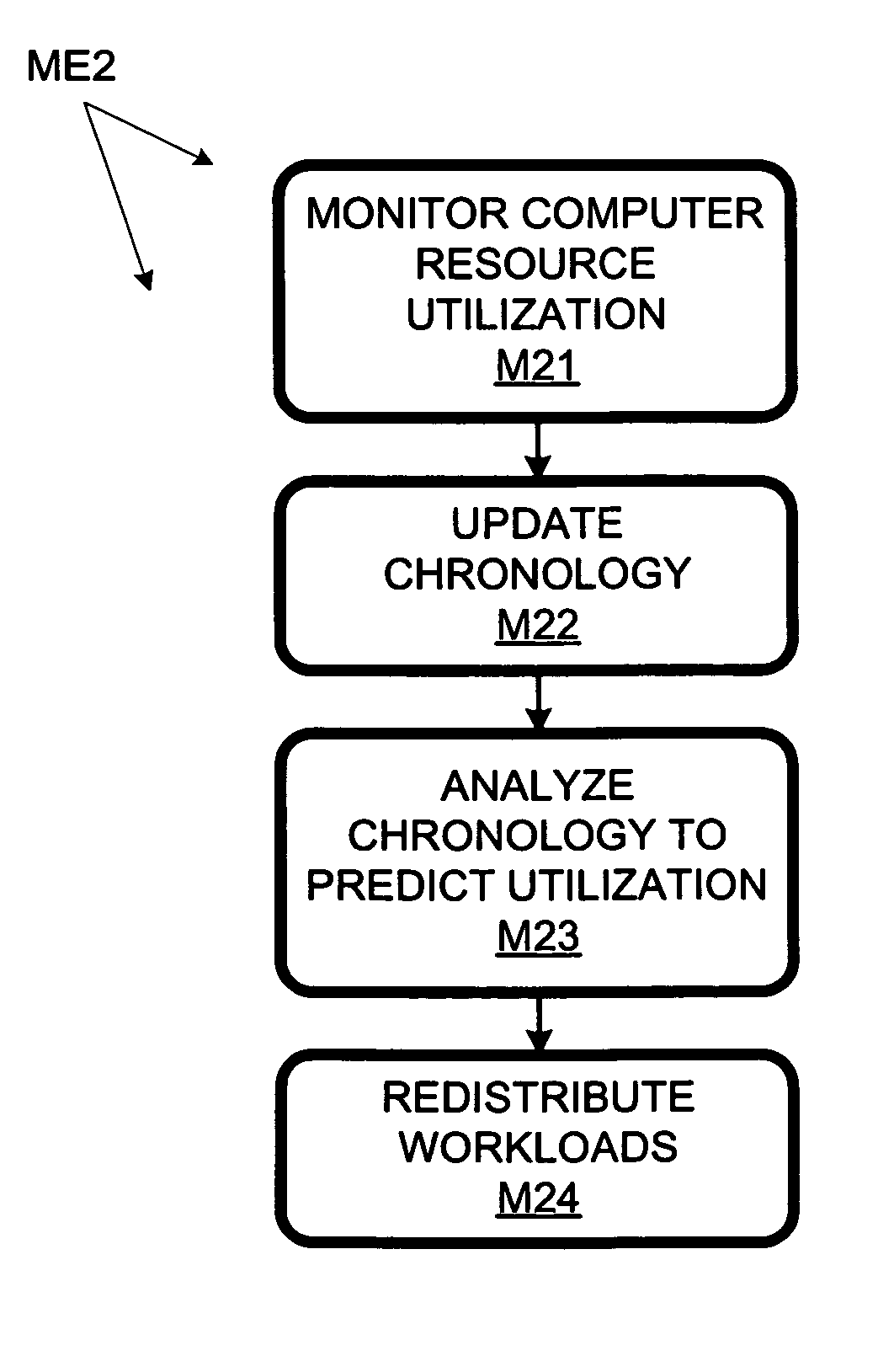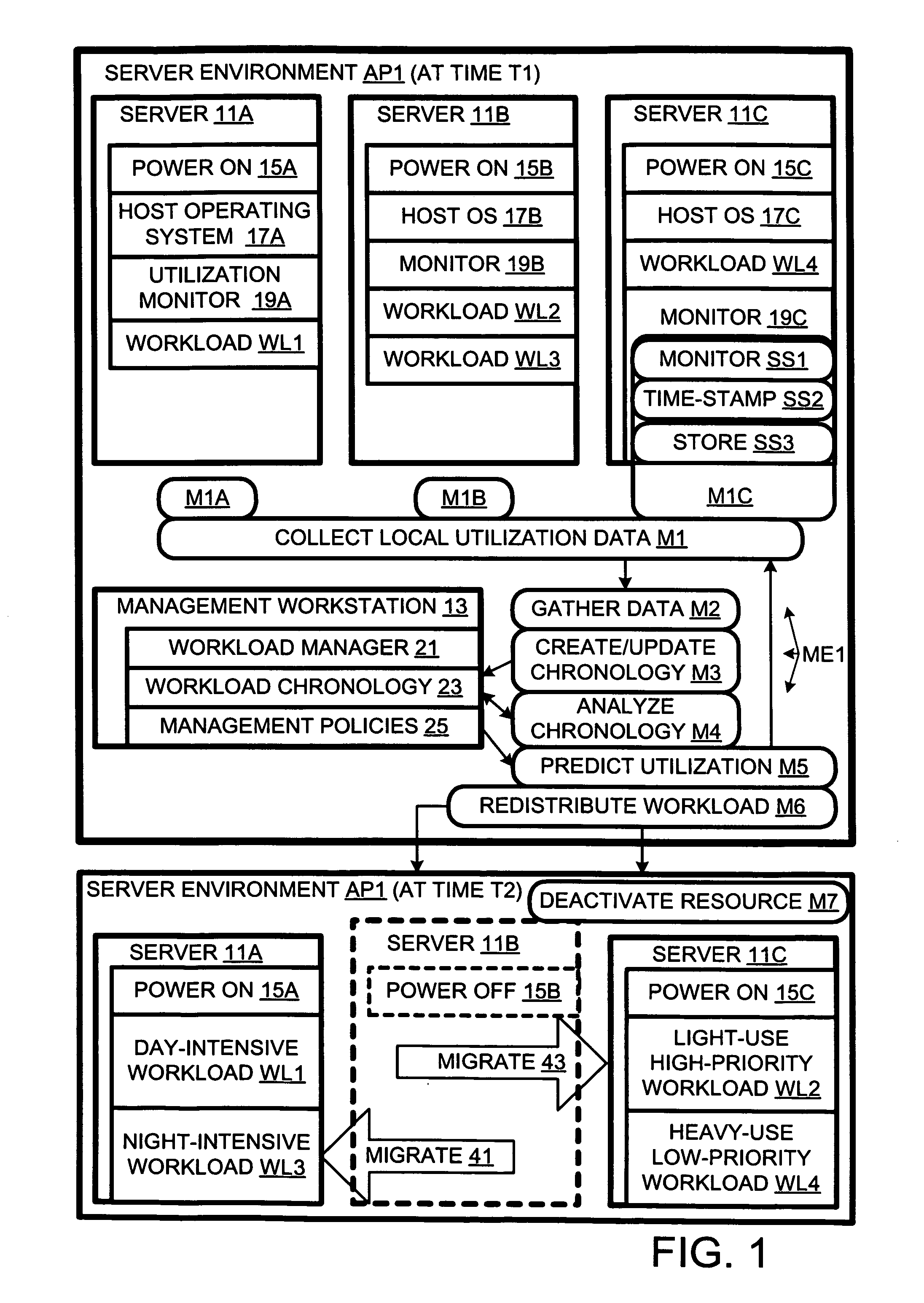Computer workload redistribution
a workload and computer technology, applied in the field of computer workload, can solve the problems of low utilization rate of computers, waste of 75% of power, and full power
- Summary
- Abstract
- Description
- Claims
- Application Information
AI Technical Summary
Problems solved by technology
Method used
Image
Examples
Embodiment Construction
[0009] In the course of the present invention, it was realized that the foregoing methods based on current measurements of utilization, while beneficial, were limited in what they could accomplish. They are limited because they control parameters that can be changed relatively quickly in response to changes in power demands. It was further realized that, if future use could be predicted, applications could be assigned to servers in a way that would minimize the number of servers without impacting performance. This would reduce energy consumption and maintenance costs. Furthermore, there would be less need to overbuy to avoid performance bottlenecks.
[0010] A server environment AP1 in accordance with the present invention is shown in FIG. 1 at times T1 and T2. Server environment AP1 includes three servers 11A, 11B, and 11C, and a management workstation 13. Servers 11A, 11B, and 11C have reduced power modes. In the illustrated embodiment, servers 11A, 11B, and 11C, and management work...
PUM
 Login to View More
Login to View More Abstract
Description
Claims
Application Information
 Login to View More
Login to View More - R&D
- Intellectual Property
- Life Sciences
- Materials
- Tech Scout
- Unparalleled Data Quality
- Higher Quality Content
- 60% Fewer Hallucinations
Browse by: Latest US Patents, China's latest patents, Technical Efficacy Thesaurus, Application Domain, Technology Topic, Popular Technical Reports.
© 2025 PatSnap. All rights reserved.Legal|Privacy policy|Modern Slavery Act Transparency Statement|Sitemap|About US| Contact US: help@patsnap.com



